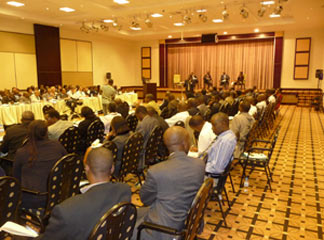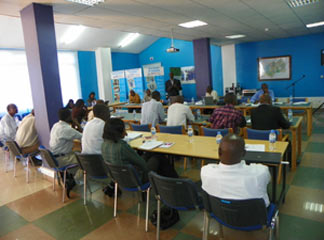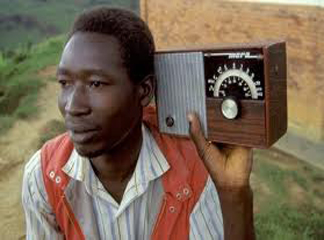Aid effectiveness is the effectiveness of development aid in achieving economic or human development (or development targets).
Aid agencies are always looking for new ways to improve aid effectiveness, including conditionality, capacity building and support for improved governance.
The international aid system was born out of the ruins of the Second World War, when The United States used their aid funds to help rebuild Europe. After the end of the Cold War, the declared focus of official aid began to move further towards the alleviation of poverty and the promotion of development. The countries that were in the most need and poverty became more of a priority now.
Donor governments and aid agencies began to realize that their many different approaches and requirements were imposing huge costs on developing countries and making aid less effective. They began working with each other, and with developing countries, to harmonize their work in order to improve its impact.
The aid effectiveness movement picked up steam in 2002 at the International Conference on Financing for Development in Monterrey, Mexico, which established the Monterrey Consensus. There, the international community agreed to increase its funding for development—but acknowledged that more money alone was not enough. Donors and developing countries alike wanted to know that aid would be used as effectively as possible. They wanted it to play its optimum role in helping poor countries achieve the Millennium Development Goals, the set of targets agreed by 192 countries in 2000 which aimed to halve world poverty by 2015. A new paradigm of aid as a partnership, rather than a one-way relationship between donor and recipient, was evolving.
Rwanda’s recent recognition as one of the top two countries in the world that use aid effectively will not only boost the confidence donors have in the country but also encourage the government to continue doing what it has to do to achieve its development targets.
Rwanda and Tanzania were the only two countries worldwide to achieve an A-rating in a major survey conducted by the Organization for Economic Cooperation and Development (OECD).
Despite development aid increasing from US$37 billion in 1960 to US$128 billion last year, poor co-ordination and unpredictable aid, puts to waste funds that should be eradicating poverty in the world’s poorest countries.
The survey by OECD, an organization which brings together donor countries, targeted 78 countries and territories that get aid with the aim of ascertaining how effectively it is put to use.
The findings of the survey released on Friday in Paris gave Rwanda and Tanzania an A rating – the highest score a country can achieve.
The report indicates that Rwanda got the nod of its financers for owning its development process by initiating its own policies – then asking the donor community to fund them.Among other areas, Rwanda scored highly on the category of how reliable the procurement system and public financial management systems are, notching up a ’B’ on the former and 4.0, the highest score by any country, on the latter.
Donor and developing countries signed up to the Paris Declaration on Aid Effectiveness in 2005.
All parties to this ’aid compact’ agreed that, to uplift more people out of poverty, developing countries must plan and manage their own paths to progress.
The OECD survey on 78 countries and territories is a global scorecard showing aid effectiveness.
The survey notes that some donors still tie aid – imposing restrictions on where goods and services must be bought or contracted, often in the donor country, instead of allowing the developing country to choose the best offer at the best price.Tied aid increases the cost of development projects by 20 – 30 percent, reducing value for money. Portugal has untied 23 percent of its aid to the countries surveyed, Korea, 44 percent, and Austria, 51 percent. By contrast, Canada, Ireland, Norway and the UK have untied 100 percent of their aid.





